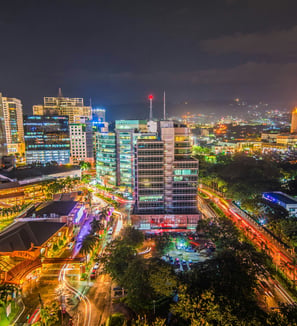Moving to a Western Country After Marrying a Filipina: Common Challenges and Tips for Success
FILIPINO DATING CULTUREVISA ADVICE


Discover the essential tips and personal stories to help your Filipina spouse navigate the immigration journey and cultural transition to a Western country successfully
When you fall in love with a Filipina and decide to build a life together in a Western country, you embark on a journey filled with excitement, hope, and a fair share of challenges. As an expat living in the Philippines for over a decade, I've seen many friends navigate this path. This article will delve into the common immigration challenges Filipinas face when moving to the US, Canada, and Europe after marrying a foreigner. We'll also provide practical tips on managing these cultural and legal hurdles to help you and your partner transition smoothly.
Understanding the Legal Landscape
United States:
The US immigration process can be daunting. After marriage, your Filipina spouse will need to apply for a CR-1 (conditional resident) visa or a K-1 (fiancé) visa if you are not yet married. The paperwork is extensive, and the waiting times can be long. One friend of mine, John, married his Filipina partner and had to wait nearly a year for her visa to be approved. During this period, they had to navigate the complexities of maintaining their relationship across continents.
Tips:
- Hire an Immigration Lawyer: An experienced lawyer can help you navigate the complex legal requirements and ensure that all paperwork is correctly filed. If an immigration lawyer is too costly but you still want advice and coaching on the process, I have had multiple American friends work with FilipinoVisa.com. Their service ranges from a detailed guide and basic assistance through to a concierge that will work with you and your partner throughout the process. From helping some friends through the process, it can be a bit of a minefield so it's worthwhile to avoid the headaches.
- Keep Detailed Records: Maintain records of your relationship, including photos, chats, and travel receipts. These can be crucial during the visa interview process.
- Be Patient and Supportive: The waiting period can be stressful. Regular communication and emotional support are essential.
Canada:
Canada offers a more straightforward process for spousal sponsorship compared to the US. However, it still requires thorough documentation and adherence to specific timelines. My buddy Mike successfully sponsored his Filipina wife, but they had to ensure they met the residency requirements and provided ample evidence of their genuine relationship.
Tips:
- Understand the Requirements: Familiarize yourself with the spousal sponsorship requirements on the official Canadian immigration website.
- Prepare for Medical Exams: Your spouse will need to undergo a medical examination by a panel physician approved by the Canadian government.
- Financial Stability: Demonstrate that you can financially support your spouse by providing tax returns, pay stubs, and other relevant financial documents.
Europe:
European countries have varying immigration laws, and the process can differ significantly from one country to another. For instance, the UK requires a spousal visa, which involves stringent financial requirements and an English language test. On the other hand, countries like Germany have more lenient policies but still require proof of a genuine relationship and adequate financial resources.
Tips:
- Research Specific Country Requirements: Each European country has its own set of rules. Visit the official immigration website of the country you plan to move to for detailed information.
- Language Proficiency: Encourage your spouse to learn the local language, as it can be a requirement for the visa and will help with integration.
- Join Expat Communities: Connecting with other expats who have gone through the process can provide valuable insights and support.
Navigating Cultural Differences
Moving to a new country involves more than just legal paperwork; it also requires adjusting to a new culture. This can be particularly challenging for Filipinas, who may experience culture shock and homesickness.
Tips:
- Cultural Sensitivity: Be mindful of the cultural differences and be patient as your spouse adjusts to the new environment. Simple things like food, weather, and social norms can be overwhelming.
- Stay Connected to Filipino Culture: Encourage your spouse to stay connected to her roots by joining Filipino communities, attending cultural events, and cooking traditional Filipino dishes.
- Open Communication: Regularly discuss any challenges your spouse may be facing and work together to find solutions. Emotional support is crucial during this transition period.
Personal Anecdotes and Real-Life Experiences
Let me share a story about my friend Todd, who married his Filipina wife, Isabella. They moved to Canada, and while the initial excitement was high, Isabella struggled with the cold weather and missed her family terribly. Todd made it a point to celebrate Filipino holidays, cook Filipino food, and even learned Tagalog to make Isabella feel more at home. They also joined a local Filipino community group, which provided a support system for Isabella. Over time, Isabella adjusted well and even started to enjoy the Canadian winters.
Another example is my friend Paul, who moved to Germany with his Filipina wife, Anna. They faced bureaucratic challenges but overcame them by meticulously following the immigration guidelines and seeking help from local expat groups. Paul also ensured that Anna attended German language classes, which significantly helped her integrate into society and find a job.
Final Thoughts
Moving to a Western country after marrying a Filipina is a journey filled with both challenges and rewards. By understanding the legal requirements, being culturally sensitive, and providing unwavering support, you can help your spouse transition smoothly and build a happy, fulfilling life together.













